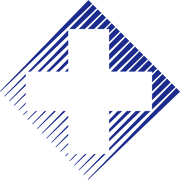
July is UV Safety Awareness Month, and now that summer has arrived, it’s a good time to refresh your sun safety knowledge. UV rays can contribute to skin damage and cancers, so it’s essential to follow the advice of your family doctor and take precautions. Learn more about UV ray protection with these frequently asked questions, so you can stay healthy while enjoying the outdoors.
4 FAQ About Protecting Yourself From UV Rays
What are the effects of UV exposure?
The sun emits both UVA and UVB rays. Although you may have heard that UVA rays are less dangerous than UVA rays, neither is safe. UVA rays damage skin cells and cause them to age faster, which leads to wrinkles. UVB rays contribute to sunburns and damage skin cell DNA, which is believed to be the primary cause of skin cancer.
Does sunscreen protect me from UV rays?
Using sunscreen regularly and correctly will protect your skin from UV rays. However, most people don’t use enough sunscreen or apply it often enough to get adequate protection.
Although no sunscreen offers complete protection, it’s best to choose a broad-spectrum product with an SPF of at least 15. The higher the SPF, the more protection the sunscreen offers, but anything above 100 isn’t likely to offer any additional protection.
What is the proper way to apply sunscreen?
 Sunscreen should always be applied before you head outdoors; even a few minutes of unprotected exposure to the sun can cause damage. Most adults need to use at least one ounce of sunscreen, or the amount to fill a shot glass, to cover the exposed areas of their body.
Sunscreen should always be applied before you head outdoors; even a few minutes of unprotected exposure to the sun can cause damage. Most adults need to use at least one ounce of sunscreen, or the amount to fill a shot glass, to cover the exposed areas of their body.
Sunscreen should be applied at least every two hours and any time you wipe off with a towel. Don’t forget to apply sunscreen to commonly overlooked areas, such as the tops of your ears.
What else can I do to protect myself?
Staying sun safe requires more than sunscreen. To prevent skin damage, avoid spending time outdoors between 10 a.m. and 2 p.m when the sun is strongest. Wear lightweight, long-sleeved shirts and pants, and cover the exposed skin of your head and face with a wide-brimmed hat.
See your family doctor at least once a year for a skin check. They’ll look for changes like new moles that may form as beginning signs of skin cancer, which is highly treatable when caught early.
If you haven’t had your skin checked recently, make an appointment with the compassionate and skilled team of family doctors at Fairbanks Clinic, Inc. For nearly 90 years, they’ve provided comprehensive health care services to the people of Alaska, with specializations in women’s health and pediatrics. Call (907) 452-1761 to make an appointment, or visit the clinic's website to learn more about their services. For more health tips, follow the practice’s Facebook page.
About the Business
Have a question? Ask the experts!
Send your question

